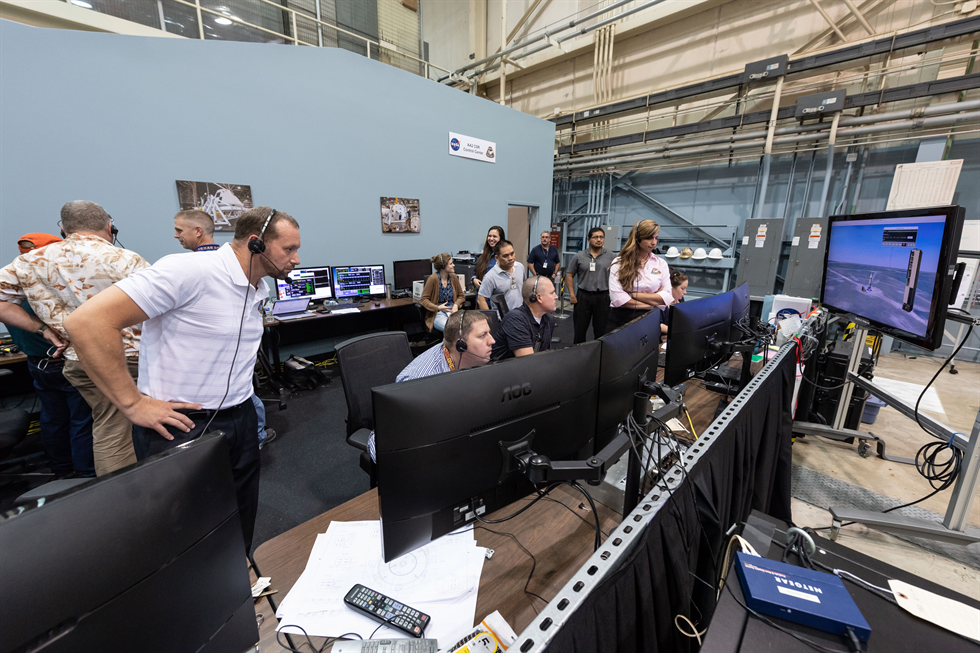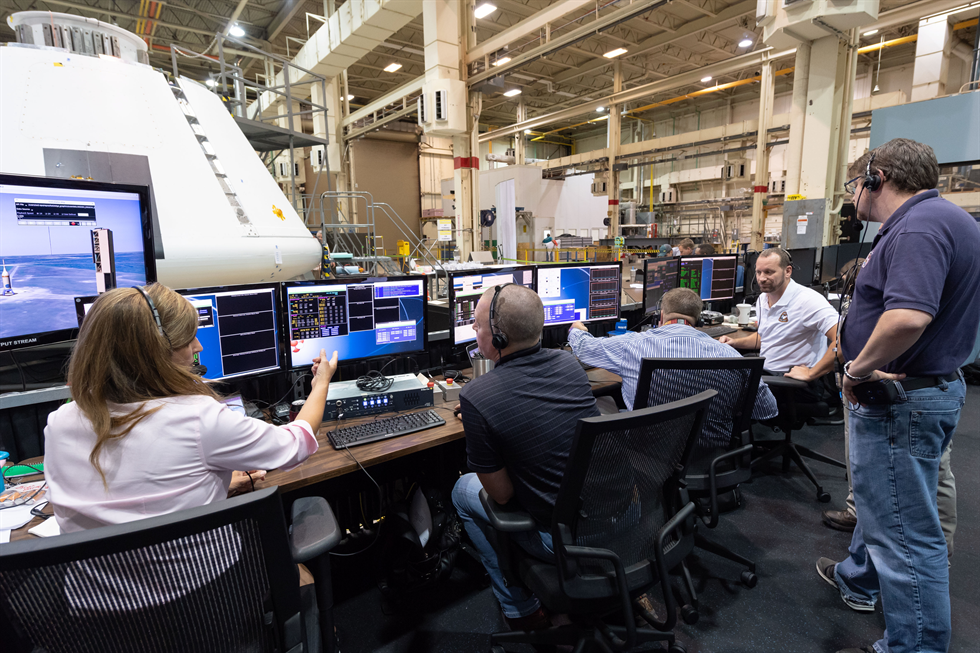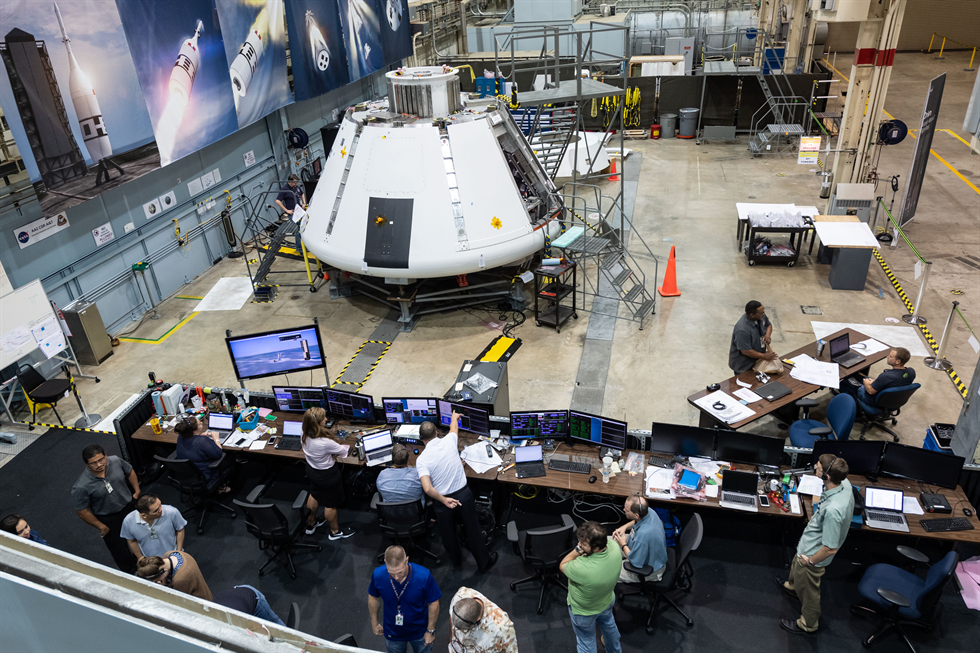Team powers on AA-2 Orion module, preps for flight test simulation
The team of engineers outfitting the Orion crew module for Ascent Abort-2 (AA-2) have had a busy summer. Since the arrival of the empty capsule in March, the NASA Johnson Space Center team has outfitted the capsule with all the components it needs for flight and powered it on for the first time in mid-July.
Powering on the vehicle is a big milestone toward the flight test and ensures the crew module works in an integrated fashion. And, it's a lot more complicated that simply flipping on a switch. The power up was a multi-day, incremental process. The team started by applying power to the vehicle's power distribution unit to ensure all the pins in the unit had the right voltages. One by one, additional systems were connected and powered to ensure that the vehicle is healthy and providing the right data.
"We've gotten to the point now where we've got all the basic, integrated functionality integrated into the vehicle," said Jon Olansen, manager of the AA-2 crew module and separation ring. "We've positioned all of the core avionics, outfitted our data instrumentation, and routed and clamped almost 11 miles of harnessing inside Orion."
AA-2 is a full stress test of Orion's Launch Abort System (LAS) planned for April 2019. As the only test of the active LAS before crew begin flying in the spacecraft, it's a safety test essential to enabling astronauts to venture near the Moon on Exploration Mission-2 and other future missions.
Now that the power-on activity is complete, engineers are moving right into simulating the flight test, including ground-support milestones, the prelaunch countdown and the flight profile, followed by testing to verify that the vehicle will perform as expected. Upon completion of testing, technicians will have a few mechanical elements to finish integrating before the crew module is rolled on its side to verify its weight and center of gravity—both of which have to be the same as the Orion that will send crew to deep space to ensure the April flight test provides accurate data for a mission abort scenario.
Once the vehicle is buttoned up, it will be shipped to Glenn Research Center's Plum Brook Station in Sandusky, Ohio, where it will undergo several weeks of acoustics testing. It will return to Johnson in the September timeframe for integration with the separation ring that connects the crew module to its booster.



In this group of images, the AA-2 launch abort vehicle test team monitors the Orion crew module's integrated systems as the vehicle is powered on in preparation for a future flight test simulation. Image Credit: NASA/Robert Markowitz
Rachel Kraft
NASA Johnson Space Center








